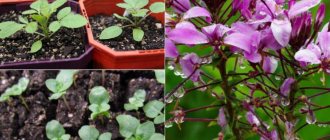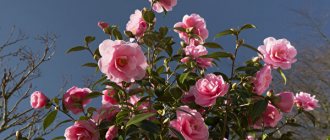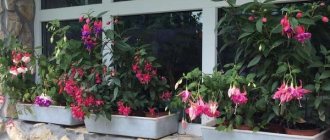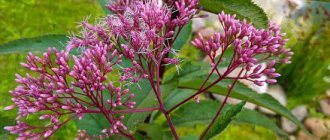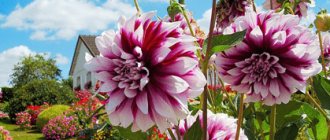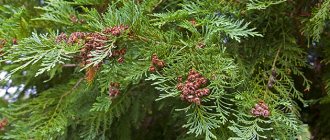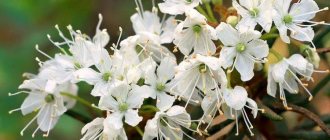Despite the modern pace of life, many people like to grow plants.
Of course, preference is given to unpretentious varieties, so yarrow in the garden is a good find for busy people. In the wild, it is found almost everywhere: in fields, along country roads, rural stadiums and even in playgrounds. The history of yarrow is associated with many legends. One of them tells the story of the Roman general Achilles, who used the herb to treat his subordinate soldiers. And this is not surprising, because the culture belongs to medicinal plants. In addition, the culture is often called Achilleia, pointing to an ancient legend. What does the legendary flower look like from the outside? What varieties are the most popular? What do you need to know to grow it in your summer cottage? Let's try to understand these issues.
Description of the plant
Yarrow (Achillea) is a genus of perennials in the Asteraceae family. Described and classified by Carl Linnaeus in 1753, its reputation dates back to ancient times. The Latin name of the botanical genus Yarrow refers to the famous Trojan War hero Achilles, who healed numerous wounds with this herb.
It is also a major source of herbal raw material, used for thousands of years to this day, and a subject of interest to breeders creating new, variegated varieties.
Botanical characteristics:
- The stem is quite rigid, pubescent, forked, reaching 50-80 cm.
- Flowers. Most local species and varieties of yarrow are distinguished by white flowers, collected in the form of baskets in large corymbose inflorescences. Their inner part is formed by tubular bisexual flowers, along the perimeter there are reed female flowers, pollinated by insects.
- Leaves – narrow and long, dark green, pinnately dissected, reminiscent of green, slightly pubescent feathers, similar to fern leaves.
- The fruit is an elongated, gray achene.
The flowering period of yarrow is from June to the end of summer. The plant decorates the garden almost all summer, although there may be a break in flowering. The bush emits a rather intense, sweetish smell, reminiscent of a chrysanthemum.
Decorative yarrow also has important environmental significance. Many birds use its shoots to create nests, which prevents the appearance of pests in the garden, and the inflorescences and leaves are valuable food for butterflies, beetles, and some wasps. Plants attract different types of insects with their nectar. In agriculture, the species is used to combat soil erosion caused by drought.
Yarrow is sometimes considered a weed. However, it should be grown on your own plot and considered as a full-fledged species. It has decorative and health benefits. Proper placement in the garden can bring aesthetic qualities.
Yarrow in landscape design
A colorful and unpretentious perennial will decorate any naturalistic composition of plantings with similar care requirements. Here you can safely experiment with color effects by planting plants in bright contrasting shades nearby.
Achillea in composition with monarda, eryngium and delphinium
A flower mix of different varieties of yarrow looks great as a single group against the backdrop of a green lawn, and low varieties will be an excellent decoration for a rockery or alpine hill in a campaign with sedum, ajuga, antennaria, and juvenile.
Bright, contrasting mixborder of Achillea, agapanthus and ornamental grasses
Yarrow is widely used to decorate a Mediterranean-style garden. The composition with graceful cereals, hyssop, echinacea, monarda, and eryngium is especially impressive.
In composition with hyssop, catnip, eremurus
Pest-prone gardens will benefit from dense plantings of yarrow as it attracts many species of beneficial insects including ground beetles, hoverflies, lacewings, ladybugs, and the foliage's pungent scent can repel some pests and mosquitoes.
Types and varieties
The genus includes, according to various sources, 85 or 150 species of perennial herbaceous plants, growing mainly in Europe, northern and western Asia, several species originate from North America.
The most common types:
- T. ordinary (A. millefolium) - the most common.
- T. ptarmica or sneezeweed, sneezeweed (A. ptarmica) - the plant causes sneezing (ptarmicum from Latin is translated as “sneezing agent”).
- T. Pannonica (A. pannonica) - used as animal feed.
- T. tomentosa (A.tomentosa) - with beautiful yellow flowers.
- T. meadowsweet (A. filipendula).
- T. club-shaped (A.clavinae).
- T. naked (A. Glaberrima).
- T. musk (A. moschata).
- T. noble (A. nobilis).
- T. willow (A. salicifolia).
More than a dozen species are found in the Russian flora. The most famous representative of the genus, common perennial yarrow (A. millefolium), is widespread in our country everywhere - in the Middle Zone, Siberia and the Urals, the Far East, and the southern regions. The genus name millefolium translates as “thousand leaves.” The flower grows in meadows, fields, and city lawns. Considered a weed. However, it is a rather attractive perennial plant that can brighten up a garden if planted properly.
Photo. Yarrow
In gardens you can also find dwarf felt yarrow (Achillea tomentosa), 10-30 cm high with yellow flowers (blooms in May-June), with shoots and leaves covered with soft down.
Photo. Tomentose yarrow (Achillea tomentosa)
Interesting plants with yellow flowers collected in inflorescences - tall meadowsweet yarrows, reaching 1-2 meters, bloom in June-July.
Photo. Meadowsweet yarrow (Achillea filipendula)
Yarrow, a charming but rather common flower, has inspired breeders to create more decorative varieties. Some of them, thanks to their interesting colors, look very elegant and can become the main decoration of a flower bed. There are various varieties of perennials, differing in the color of the inflorescence. It can be: pink, yellow, orange, red, cream. These individual colors can have different shades. Beautiful, expressive-colored plants are also represented by interspecific hybrids.
Most decorative varieties are obtained from the resilient and unpretentious yarrow. As some gardeners say, this type of yarrow turned out to be the most domesticated. Below is a list of yarrow varieties recommended for growing in gardens.
For lovers of decorative varieties we can recommend:
- “Pearl mussel” or “Pearl” is a variety of yarrow ptarmika, which is especially popular, unpretentious, with small, white double flowers. Height 40-80 cm, flowering: June-September.
Photo. T. Ptarmika “Pearl mussel”
- “Paprika” is a variety up to 80 cm high, with bright red reed flowers and yellow tubular flowers, blooms all summer.
- "Kirchkoenigin" Kirchkoenigin - dark red flowers with a light center, blooms all summer and September.
- "Terracotta" Terracotta - multi-colored flowers, in shades of orange, yellow and red, up to 60 cm high.
- "Tricolor" Tricolor - yellow-orange flowers with a thin red-pink border, blooms until September.
- “Red Velvet” Red Velvet is a variety with dark red flowers that blooms until October.
- "Purpurglut" Purpurglut - flowers of intense dark pink color, blooms until September.
- “Credo” Credo – cream color.
- “Cherry Queen” Cerise Queen - the inflorescences are quite loose, the flowers are of an intense red-pink color.
- "Moonshine" Moonshine - with very beautiful, dense inflorescences of intense bright yellow color.
- "Vandeful Wampee" Wonderful Wampee - medium-sized (40 cm), light pink flowers.
- "Saucy Seduction" Saucy Seduction - 60 cm high, amaranth-pink flowers.
- “Samme fruit carmine” Summer Fruits Carmine is an interesting variety with multi-colored flowers; in one inflorescence, reed flowers can have different shades from light to carmine pink.
- “Same Fruit Lemon” Summer Fruits Lemon – 50 cm high, lemon yellow flowers.
- “Samme Fruit Salomon” Summer Fruits Salomon – salmon flowers.
- “Lilac Beauty” Lilac Beauty – tall variety (80 cm), lilac-pink flowers.
- "Colorado" is a variety with multi-colored flowers: salmon, red, pink and lilac.
- "Carnea" Carnea - flowers are bright, dark carmine.
- “Apple blossom” Apple Blossom is a variety with large lilac-pink flowers, 60-70 cm high.
- "Cassis" Cassis - cherry blossoms.
- “Nana Compacta” Nana Compacta – white flowers, with a large basket, dwarf variety (30-40 cm), flowering: June-August.
- "Pretty Belinda" Pretty Belinda is a variety with pink flowers.
- “Yellow Bouquet” Yellow Bouquet – grows up to 50 cm, the flowers are bright, yellow.
Botanical certificate
This perennial herbaceous plant forms compact powerful bushes up to 120 cm high. The shoots of the perennial are erect, rigid, and lie down over time.
At the base they are slightly branched. The leaves of this type of yarrow are pinnately dissected. There are teeth along the edge of the plates.
Moreover, their size increases closer to the top. The leaves are sessile, arranged alternately on the shoots. The color of the plates is gray-green. The length of the leaves reaches 6-10 cm , and the width is 0.5-1 cm.
The root system of meadowsweet yarrow is superficial, creeping. It consists of numerous fibrous roots and underground shoots. Over time, the plant can grow greatly, suppressing the development of neighboring crops.
The tops of the shoots of yarrow meadowsweet are crowned with corymbose inflorescences. They consist of several baskets. The diameter of the inflorescences reaches 13 cm . The shade of the buds is yellow. Moreover, the color can change from pale to rich. The marginal flowers in the baskets are golden, and the central tubular ones are yellow.
The plant grows buds in July and continues for 30-40 days. After flowering, achenes are formed. The perennial is able to reproduce by self-sowing. To prevent this, it is recommended to cut off fading flower stalks in advance. Otherwise, in a few years the plant will fill the entire garden plot.
Meadowsweet yarrow has an average level of frost resistance . The plant can withstand temperatures down to -17-20 degrees. But at the same time, the species is characterized by drought resistance.
With a long absence of rain, the lower leaves may dry out and the inflorescences may decrease in size.
Requirements for soil and planting site
Garden yarrow does not have great requirements. Of course, he has his own preferences that will help him develop easier and faster. However, this does not mean that its cultivation will be impossible in other conditions. It grows well in dry, poor soil, and only wetlands are not suitable for it.
Ideal soil for yarrow:
- well drained, mixed with sand;
- with pH 4-8;
- fertile.
You should avoid sowing yarrow in heavy, wet, acidic and compacted soils. It copes better with drought than with excessive soil moisture. You can add a little sand to the garden soil, and compost will improve the soil structure, this is especially important if you grow noble varieties of yarrow. Liming can be used to deoxidize the soil.
The optimal position should be sunny, but most species will tolerate partial shade. Lack of light can cause stems to fall to the sides. The fastest growth is observed in a sunny or slightly shaded place. Greater sun exposure will also significantly increase the flowering period.
Although ornamental yarrow varieties are extremely attractive, when deciding to grow them, remember that they grow vigorously and are quite expansive. Yarrow easily reproduces on its own, occupying territories. Therefore, you need to wisely plan a place for it. It is necessary to allocate a wide area for it so that it can develop and spread freely. It should not be planted in close proximity to other types of plants that are weak in growth, as it can choke them.
Plant growth can be limited by using root barriers dug into the ground to prevent uncontrolled growth of underground rhizomes. Another solution would be to grow the plants in a large bottomless pot buried in the ground.
Regions of growth
In nature, the plant is found :
- in the meadows;
- In the woods;
- mountain slopes.
This prevalence is due to the unpretentiousness of yarrow and its ability to quickly adapt to various climate conditions.
Yarrow Cherry Queen is common in the eastern part of Siberia, the Caucasus, the Far East, and the European part of Russia.
Landscape designers fell in love with the Cherry Queen yarrow variety for its elegance and harmony with other crops when creating interesting compositions in gardens and parks. A spectacular perennial can transform the most boring corner of the site.
Landing
Yarrow is planted in open ground, usually in the form of ready-made seedlings, which can be bought in garden stores. Before planting, the soil should be loosened to a depth of 30 cm. Individual plants are placed at a distance of 30-40 cm; they grow to the sides quite easily.
You can also start growing yarrow from seeds that are sown as seedlings in the spring (in March or even February). Sowing seeds and growing seedlings is carried out at home or in a greenhouse. The soil for seedlings in pots should be light, well-drained, and constantly moist. Germination requires a temperature of 18-21 °C.
Yarrow seeds are covered with a very thin layer of substrate and its moisture is monitored. As soon as the first shoots appear, it is worth moving them to a room with a temperature of 12-15 °C. At this stage, we transplant the strongest seedlings into larger pots and feed them with nitrogen-rich fertilizer.
Yarrow seedlings can be planted in open ground when spring frosts stop, in the Moscow region, central Russia - in the second half of May. The first flowers will appear next year.
What do they look like in the photo?
At the end of July and beginning of September, when the faded yarrow flowers begin to dry out, they are collected and dried, after which they begin to prepare them for sowing next season.
The seeds are contained in a flat, elongated, silvery-gray achene without wings . Its length is only 1.5-2 mm, and the seeds inside are very small, flat and slightly oblong.
In the photo you can see yarrow seeds:
Growing and care
Yarrow is easy to care for. This perennial does not require special conditions. It will grow on almost any soil, is quite unpretentious, can survive droughts and frosts, and reproduces easily. Under unfavorable conditions, it can suffer from fungal diseases and insects.
Trimming
Yarrow usually blooms in two distinct waves - in June and late summer. After the first flowering, unsightly, brownish, faded inflorescences appear on the stems, which can be removed one by one, or all plants can be cut off to half the height of the shoots. Both of these methods prolong the flowering period and prevent spontaneous reproduction of yarrows, sometimes considered weeds. Pruning allows the shoots to branch - the shape of the bushes is significantly improved.
In autumn, drying shoots can be cut off completely near the ground, although some gardeners prefer to leave brown inflorescences as an element of the winter landscape - they look beautiful covered with frost or against the backdrop of snow caps.
Watering
Newly planted or transplanted seedlings require regular watering to ensure their root system develops well. Experts recommend monitoring soil moisture during this period. Mature yarrows require virtually no watering. They love dry conditions, cope well with them, and only in very extreme cases of prolonged absence of precipitation should yarrow be watered.
Fertilizer
Similar modesty is also typical in the context of yarrow fertilization. Soil poor in nutrients does not interfere with the plant at all; a fertile substrate unnecessarily increases the growth rate, which often leads to the fall of overdeveloped flowers.
Therefore, you can feed yarrow once a year with organic compost, but no more!
Reproduction
Yarrow is an expansive species. It reproduces and grows very easily. The species successfully reproduces itself by dispersing seeds, but the methods of its controlled propagation are varied and quite effective. You can use the resulting seeds, but most purchased varieties are hybrids that will never produce identical offspring when propagated by seed.
You can also propagate yarrow from cuttings. Cut the tops of the shoots 15 cm long, remove the two lower leaves and place them in a mixture of wet peat and perlite. This way you can get cuttings identical to the parent plant, which should take root fairly quickly in conditions of heat, sun and humidity.
The best way to propagate yarrow is by dividing the bush; this allows you to immediately obtain strong, rooted plants ready for flowering and rejuvenates the entire bush. Division is carried out in late autumn or early spring, ideally every 3-5 years.
Diseases, pests
Yarrows tolerate winter well and do not require protection. They die back in the fall to send out new shoots in the spring.
Unfortunately, yarrows are not completely resistant to diseases and insects, and are sometimes affected by aphids and fungal diseases. For prevention, you should avoid frequent spraying of leaves with water when watering and regularly thin out the flower bed, and if a problem arises, you should treat the plants with an appropriate preparation. The most common are:
- powdery mildew, manifested by a white coating on the leaves;
- rust, causing shoots to turn brown.
How and when to collect grass?
Need to know when to harvest yarrow so it can be used? You need to pluck the above-ground part of the plant - stems, leaves, flowers. It is important that they are not woody or dry. Harvesting should be done at the beginning of flowering. Experts advise not to cut too much from each bush. The upper part, 30-35 cm long, should be collected.
After receiving the raw material, it must be dried. Warm, dark places are ideal for drying. The drying temperature should not exceed 35 °C. Dried yarrow herb can be used to prepare an infusion for drinking and washing the face.
Baths with the addition of yarrow extract are good for improving skin condition. To obtain it, you need to pour one hundred grams of dried raw materials with two glasses of water and let it stand for 1-2 hours so that the grass swells. This liquid is then poured into a bath of water.
How to assemble correctly?
Collect seeds in dry, sunny weather. To do this, cut off all the dry inflorescences one by one and carefully place them in a paper bag or small cardboard box. Picking an inflorescence by hand, without scissors, is quite difficult, since the yarrow stem is strong, and if you try to break it, a lot of seeds can fall off.
The collected baskets are carefully kneaded to separate the future seed from the achenes and then, armed with tweezers, the largest, whole seeds are selected.
Then they are laid out on a sheet of paper and dried in a dry place, protected from direct sunlight. After 10-14 days, the dried seeds are transferred to a paper bag and stored in a dark, dry place.
Processing Features
In February, 1 day before planting yarrow, it is recommended to pickle the seeds to reduce the risk of seedlings being damaged by fungal and bacterial diseases.
You can etch in the following ways:
- Spraying with special toxic preparations that kill fungi and other pathogenic microflora.
- Soaking in a 2% solution of potassium permanganate. In this case, the seeds are dipped into the solution for 15 minutes, then removed using a fine strainer and transferred to a dry cloth.
- Soaking in formaldehyde solution 1:600. Etching using this method is carried out for 50 minutes.
- Treatment of seeds with hot water (temperature 55-70 degrees).
Seeds processed using the above methods can be stored for no more than 2 days. It is best to start planting them the next day after the procedure.
Usage
In landscape design
It's hard to imagine a plant that is easier to grow and use in the landscape than yarrow. It pairs well with most summer flowering species, filling gaps in flower beds and attracting countless insects.
Some species, such as tomentose yarrow (Achillea tomentosa), are excellent for rock gardens and planting along stone paths.
Yarrow can also be used as a cut flower and for dried bouquets. The species Achillea clypeolata is often prepared for dry compositions; its inflorescences, after drying, perfectly retain their shape and often their color (if it is not white).
It is worth combining different varieties of this plant in one flowerbed. Mixing different colors of flowers will bring a beautiful effect. It’s not just the aesthetics of the plant that a gardener who sows yarrow can enjoy. This perennial attracts butterflies. This way, the garden will receive a variety of colors, and you can also enjoy the sight of these charming butterflies.
As a plant protection product
Yarrow can be used to make an infusion used in plant protection. In organic agriculture and natural methods of plant protection, it is recommended to prepare 2 types of biological products: a decoction and an extract from whole yarrow plants, cut during flowering. Both drugs are used prophylactically. Decoction - against:
- aphids;
- psyllids;
- bedbug larvae;
- butterfly caterpillars.
The extract helps against:
- moniliosis;
- powdery mildew;
- brown rot of stone fruit trees;
- spotting of stone fruit trees;
- peach curliness.
Yarrow decoction recipe
Method 1:
- dry plants 800 g boil in a small amount of water for 30-40 minutes;
- then add water to 10 l;
- let it sit for 36-46 hours, add 40 g of gray soap.
Method 2:
- 1 kg of fresh or 100 g of dried plants pour 10 liters of water;
- let stand for 24 hours;
- cook for 30 minutes;
- do not dilute.
Yarrow extract
Preparation:
- 1 kg of fresh or 100 g of dried plants pour 10 liters of water;
- let stand for 24 hours;
- dilute in a ratio of 1:10.
Use for spraying during the flowering period.
Medicinal properties
The properties of yarrow allow it to be used in natural and traditional healing. This is not only a beautiful plant, but also useful.
Common yarrow can be used as herbal raw material. The herb obtained from this plant contains many substances that have a beneficial effect on the body:
- vitamin C;
- tannins;
- mineral salts;
- flavonoids;
- choline;
- Achillein.
The plant is commonly used in herbal medicine as a natural remedy and for preventive purposes. Infusions of dried flowers and leaves effectively suppress bleeding, have an anti-inflammatory, analgesic effect, help with feverish conditions, and can be the basis for homemade facial tonics and hair rinses.
Washing your face with yarrow herb helps cleanse the skin, eliminate blemishes and combat the problem of oily skin.
Researchers highlight high levels of antioxidants in the form of flavonoids, phenolic acids and coumarins, which have the potential to fight a wide range of bacteria, fungi and parasites. Infusions calm the nerves. Young leaves are used as a seasoning.
You can successfully decorate your entire garden with a variety of yarrows, enjoying not only the beautiful appearance, but also the free time saved on caring for more capricious plants!
